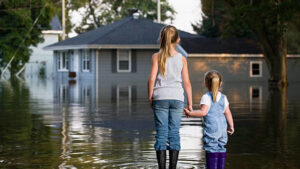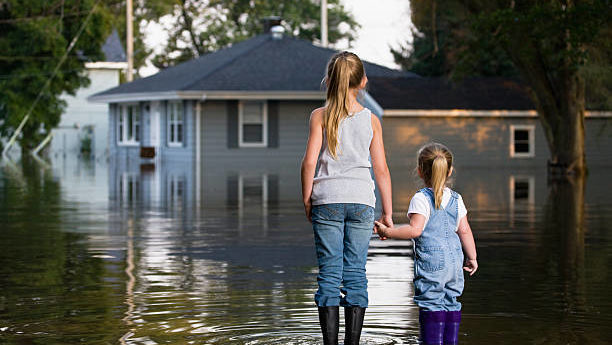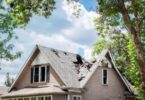
Floods can be disastrous with only as much as a few inches of water from a flood causing a lot of damage. This damage can cause losses climbing upward into thousands of dollars. Therefore, there is an importance to know different flood insurance requirements for lenders.
Flood insurance covers dwelling properties against losses caused by water, especially losses due to flooding that might be caused by either heavy rainfall, melting snow, blocked storm drainage, or dam failure.
Why do Lenders Insist on Getting a Flood Insurance?
Mortgage lenders usually require you to purchase flood insurance if their home is or will be in a flood risk zone(particular flood hazard area). The options of whether to buy flood insurance will depend on if your home is in a high or low-risk flood area.
Standard homeowners insurance policies do not cover for flooding, especially from external natural causes or human-made ones caused by mistake due to plumbing issues. It is, therefore, necessary for a separate insurance policy that can protect against that sort of damage caused by a flood.
Your lender has a sustainable financial stake on the property on a mortgage. The house is serving as collateral since the lease has not been paid off. If you stop making payments and the lender’s asset (your home) gets destroyed by floodwater, your mortgage lender losses. This reason is why it is a necessity for homeowners, especially those with homes in high-risk flood areas to purchase flood insurance. This is one of the important flood insurance requirements for lenders.
What are Lender’s Requirements?
1. Flood Hazard and Insurance Availability Notice:
If a lender determines that the property is or will be in an SFHA(Special Flood Hazard Area). The lender would need to provide a notice to the borrower. This notice requirement would apply in communities in which the home property does not participate in the NFIP.
2. Flood Hazard Determination
If your lender is federally regulated, it must determine and ascertain if your home is in an SFHA. Then they can mandate you to purchase flood insurance. It is also essential that your mortgage lender documents the flood hazard determination using FEMA’s(Federal Emergency Management Agency) standard form and retain a copy throughout your loan.
3. Coverage amount:
The amount of Flood insurance for property located in flood Hazard area should be less than:
- The loan’s outstanding principal balance
- The maximum amount of coverage allowed by the NFIA for the particular type of property serving as collateral.
The maximum coverage available under the NFIA is lesser than the overall property value if you remove the actual cost of the land in which the property is.
4. Value of the insurance
Policy coverage under the NFIP can not pay claims that are more than the property value of protection, so it is necessary that when determining the cost, you get the correct amount. The right amount will help the lender to avoid making the borrower purchase too much or too little flood insurance due to miscalculation.
5. Force Placement of Flood Insurance
During your loan term, if your lender determines that the collateral has less flood coverage than is required by the agencies that implement these regulations. Your lender would send you a notice to obtain the required insurance if that becomes the case. If within 45 days, you do not purchase the necessary flood coverage, the lender can buy flood insurance coverage on your behalf.
What Does Flood Insurance Cover?
The flood insurance would provide coverage money to repair or build your home’s building structure; the following items are part of your building structure:
- All built-in Appliances
- The building and its foundation
- All Electrical systems
- Windows blinds
- All plumbing set up
- Debris Removal
- All permanent installation
What Does Flood Insurance not Cover?
Flood insurance only covers hazards and damages caused by floods to your building structure and does not include the following:
Damages caused by:
- Water damages that are not caused by flood
- Moisture, mold or rain leaks
- Personal belongings destroyed by flood
- Properties and personal effects outside the insured building.
- And additional living expenses due to flooding displacement.
How much flood insurance do you need?
It is necessary to consider the insurance you might likely need. Considering how much insurance does not only limit you to the required amount needed to purchase the policy. This question also includes vital answers to assessment information. It answers if your flood insurance coverage amount equals the value of your home, and also if the plan has limitations on possessions under certain specific categories.
Things to consider while choosing a flood insurance
Inquiring about the cost of rebuilding your home is based on a lot of factors. Some would include the size of the house and the quality of labor and materials used. You can quickly get the building cost value from your insurer, especially if you just recently bought the policy. So you also have to also remember, the rebuilding cost is usually a bit lower than the market value cost of your home.
You should know your policy limits on individuals’ possessions categories. As this knowledge would help you know if your flood insurance coverage cost would be able to cover for losses. These losses include some belongings within the house or if you should get additional coverage, you should also consider the limit for NFIP flood coverage. So, if these limits would cover for your calculated loss or not, you should know. But if you would not, you should opt for a private flood insurance company with more favorable terms that suit your needs.
NFIP LIMIT FOR FLOOD INSURANCE COVERAGE.
Dwelling Structures: $250,000
Personal Property : $100,000
Valuables and Business Property: $2,500
Additional Living Expenses : None




